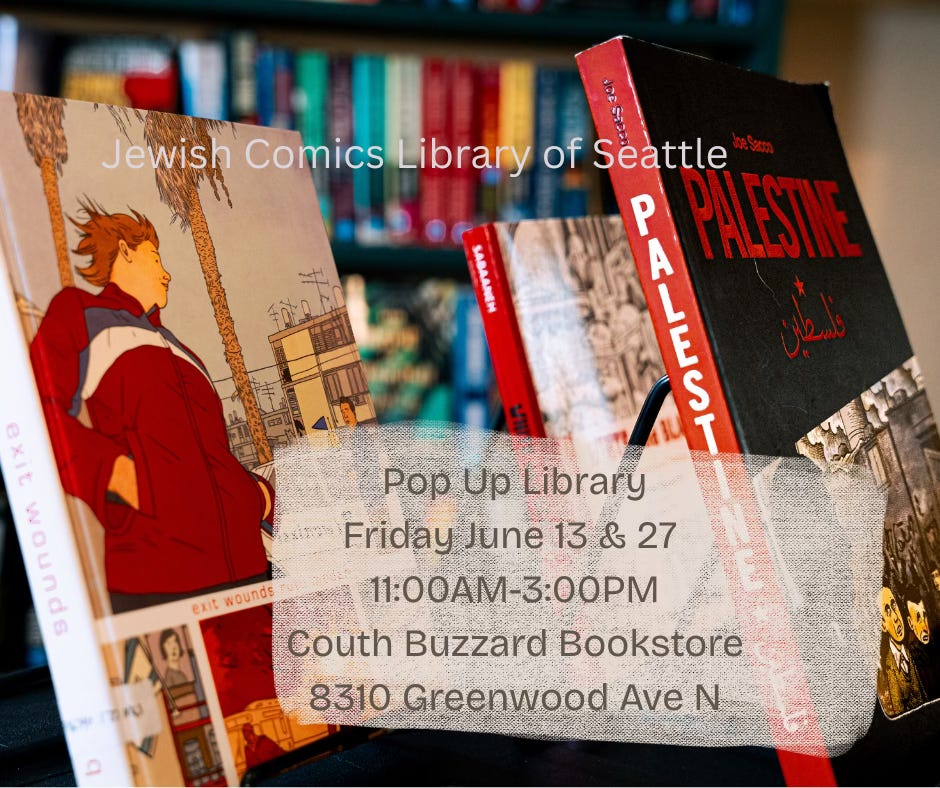No, it’s not a graphic novel version of Kerouac’s On the Road—though now that I think of it, that might actually be a pretty great idea. And while we don’t (yet) have that in the Jewish Comics Library, we do have another offering from the Beat Generation, a graphic adaptation of Ginsberg’s Howl. So maybe we’re halfway there.
This post is meant as a report back from Winthrop, Washington, where we participated in the town’s annual LitFest. The Friends of the Winthrop Public Library kindly invited the Jewish Comics Library of Seattle to join them in their LitFest by promoting graphic novels, especially to adult readers who might not yet know what they’re missing.
Our collection focuses on Jewish authors, artists, and themes, but it's broad in genre and scope: memoir, fantasy, history, social critique, daily life. In that way, it’s a kind of microcosm of the wider world of graphic literature for adults. We were there to remind people that graphic novels aren’t just for kids and to show that, like all literature, they reward curiosity.
Over the course of the day, we had dozens of engaging conversations. A few folks had read Art Spiegelman’s Maus, which is a classic at this point, but most were surprised to learn the depth of impact that Jewish artists had in shaping the American comics industry from the very beginning, often as both creators and businesspeople. That history opens up a whole conversation about immigration, marginalization, and innovation under pressure.
There were some MAD magazine fans, people who lit up at the names Harvey Kurtzman and Al Jaffee. One person remembered the comics title Sgt. Rock from childhood and was delighted to learn that Joe Kubert, the artist behind it, also created adult graphic novels like Jew Gangster and Yossel. Another knew of Will Eisner and The Spirit, but didn’t realize he was the first to put the term “graphic novel” on a book cover—with A Contract with God.
We also talked about pioneering women in underground comics, like Aline Kominsky Crumb and Trina Robbins, who pushed the medium toward greater honesty, irreverence, and personal storytelling.
One especially memorable conversation was with someone who admitted they spend too much time scrolling social media and wanted to shift some of that screen time toward something more intentional. They realized that graphic novels could fill that space, offering visual richness and narrative depth, but in digestible, compelling form. Not endless feeds, but something with shape, perspective, and artistry.
It turns out, once you open the door, graphic novels tend to start conversations. Whether it’s nostalgia, cultural memory, or just the pleasure of visual storytelling, something resonates. And as it happens, the Friend of the Winthrop Library who invited us is also a retired school librarian, so we had some shared professional delight in watching people discover that they do like comics, after all.






